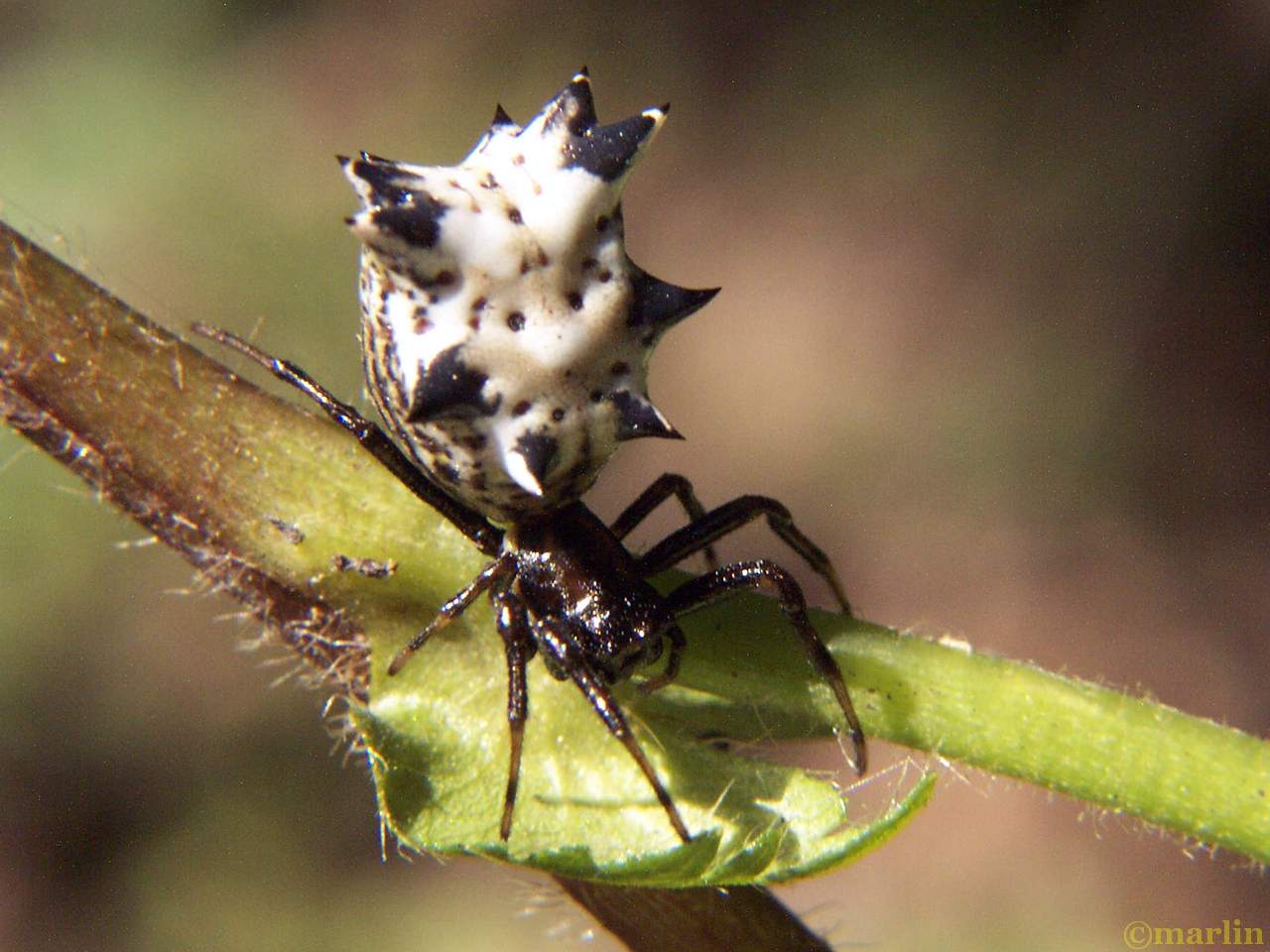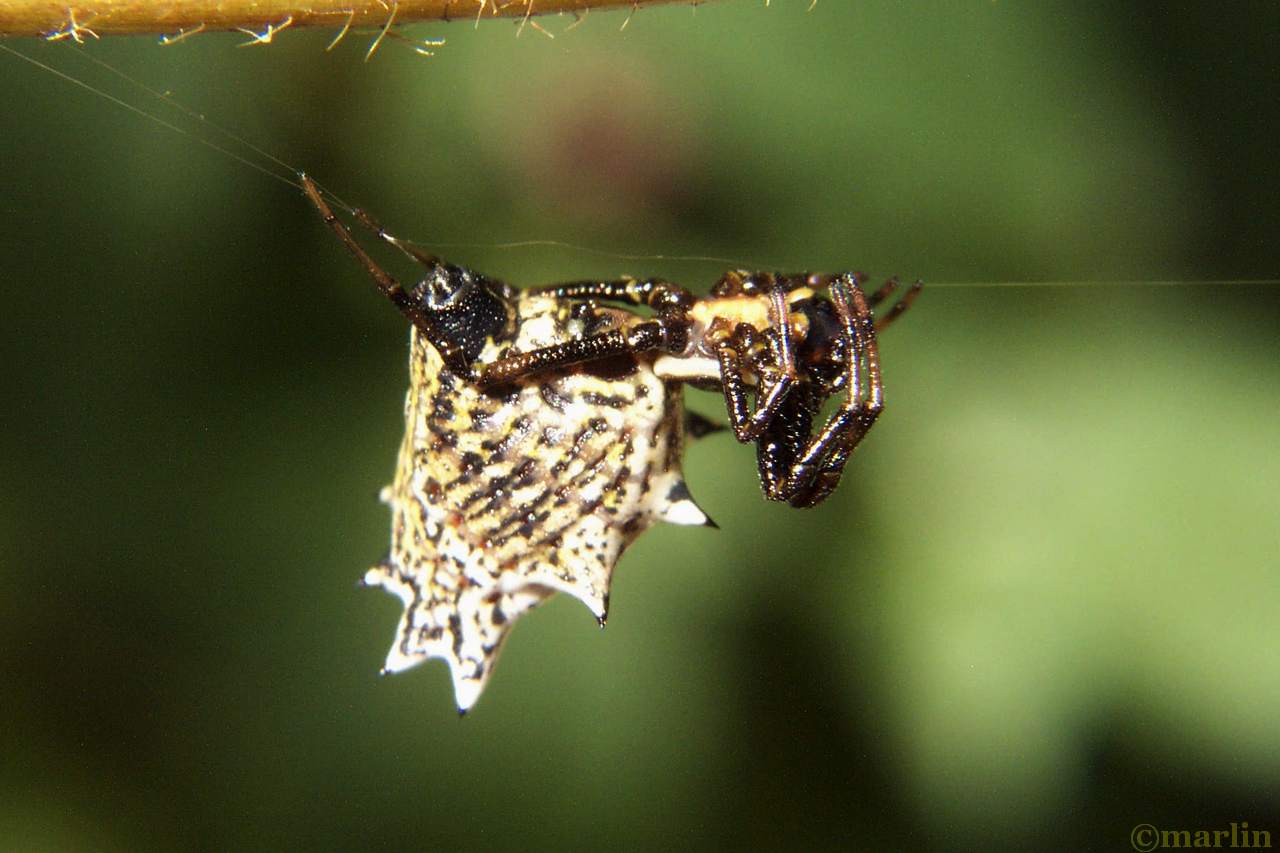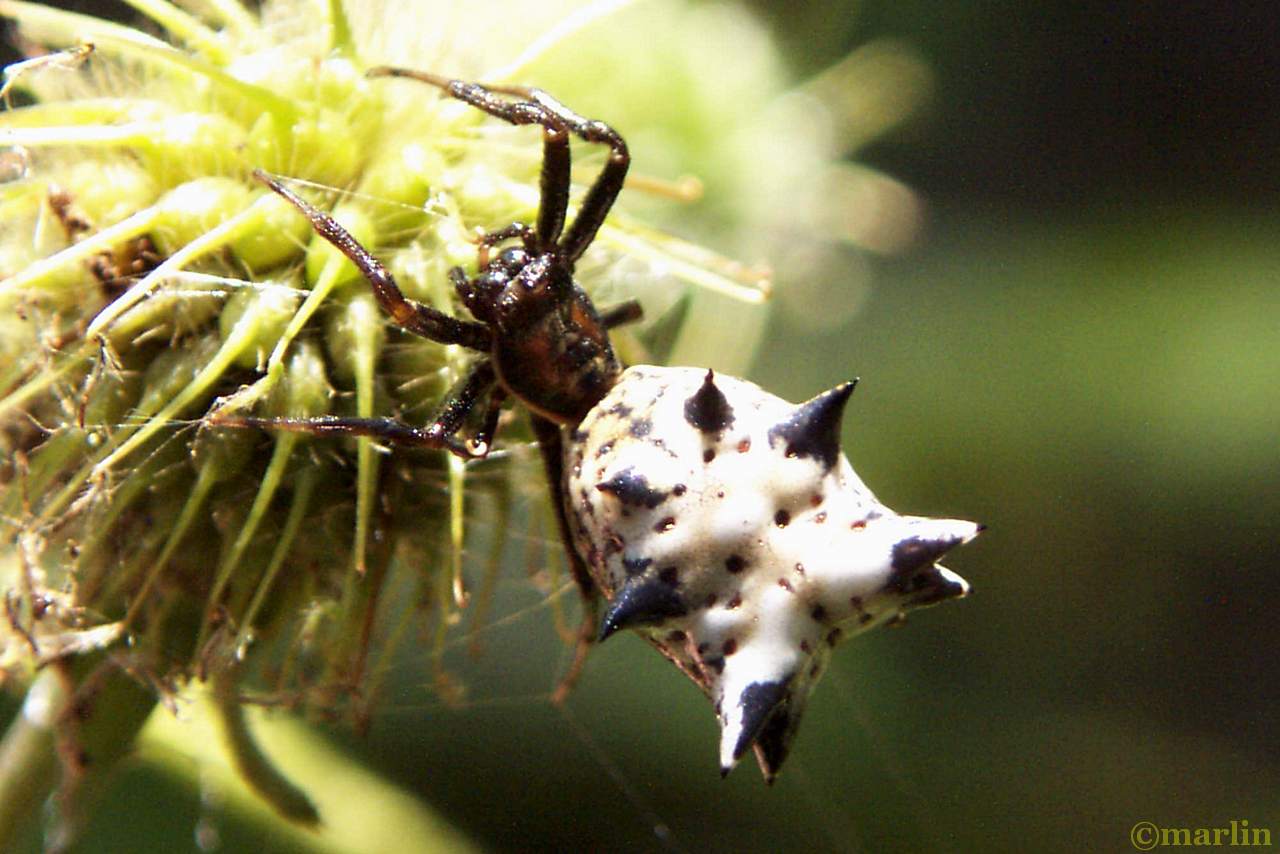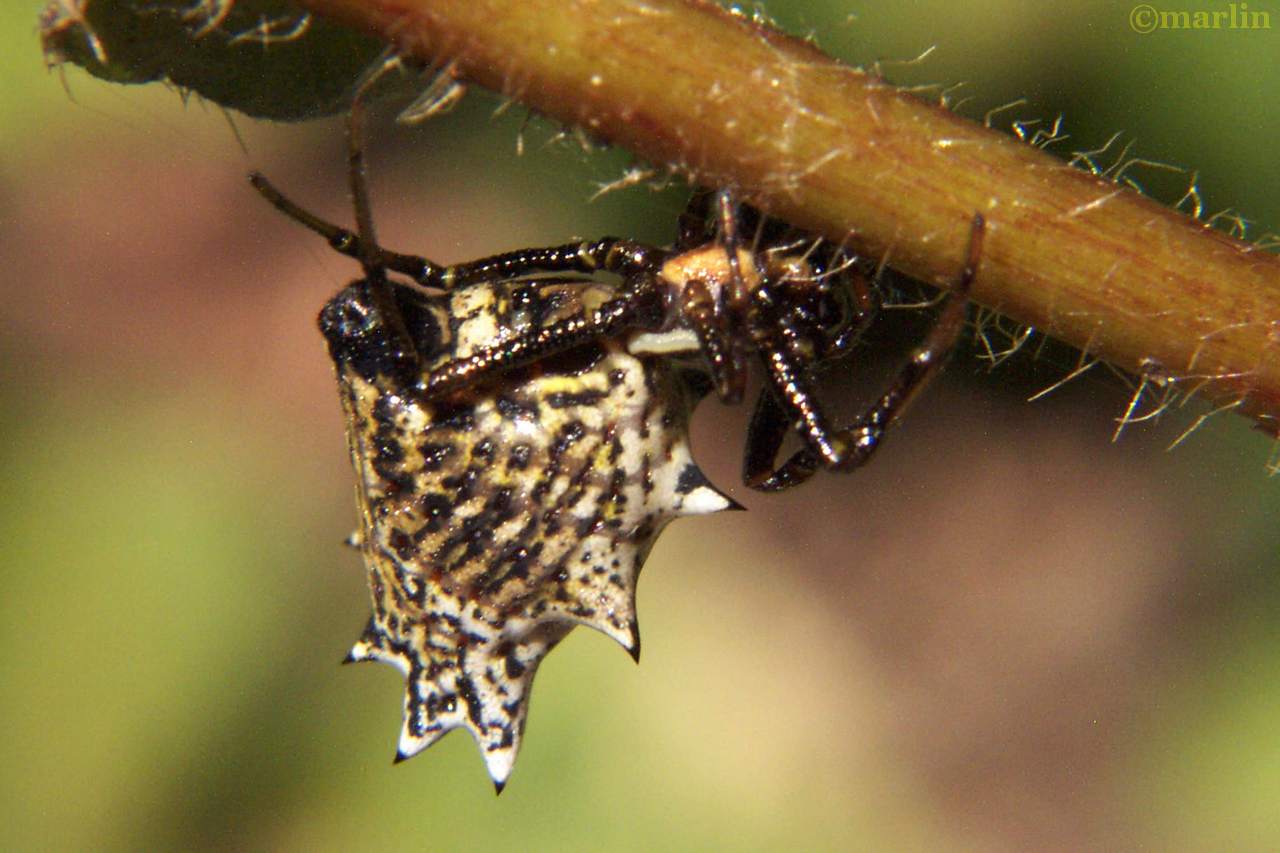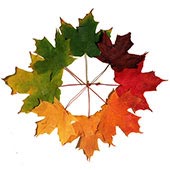Micrathena gracilis – Spined Micrathena
Commonly called the Spined Micrathena, this unobtrusive forest denizen is completely harmless to humans. This spider spins a large, tightly coiled orb web in wooded or brushy areas. These webs are often anchored to shrubbery or trees nearby with log, strong single threads many feet long. It’s nearly impossible to walk along a forest understory trail without running into these strands of silk – and you will realize how strong those anchoring lines are.
Micrathena spider webs are extremely difficult to see as one walks through the woods – most often they are spun horizontally, in which case a female spider firmly ensconced in the center of the orb is virtually invisible. If you are lucky enough to be on a forest path that faces the rising or setting sun, the long, slanting light will reveal dozens of webs that were previously invisible. Quite a sight when the full abundance of these spiders is revealed.
I took these shots circa 2002 with my Kodak 3Mb DC4800 point and shoot. I used to shoot everything in available light.
References
- Bugguide.net, Micrathena
- Arthur V. Evans, National Wildlife Federation Field Guide to Insects and Spiders of North America
